.Background


Our main research goals were to understand the gift distribution process and identify the different types of users that might use the app and their pain points, goals, and needs.

“Each time, we had to manually tally the gift quantities reported by other departments. Then, we had to distribute the gifts to various office locations. After gift distribution, we needed to count the remaining items and cross-check with the number of recipients. I’m SO stressed out about the whole process.”

“I'm usually responsible for managing the remaining gifts. I need to record incoming gifts into inventory, and I regularly update and check the stock quantity if someone requests an item.”

“During every collective gift distribution, I get quite busy because each colleague coming to collect a gift needs to sign for it. I must ensure they sign before they can go to the side to pick up the gift. However, when there are many people, it can get quite chaotic, leading to issues during later quantity checks.“

"One time when I was helping colleagues collect gifts, I had to find each person's name on the front desk list and confirm it. It took quite a long time, and I could hear colleagues waiting in line behind me complaining.“
In order to ensure the rational implementation of the requirements, I conducted several meetings and interviews with the employee responsible for the gift-related processes during the early stages. This helped in clarifying and researching the requirements, and I also documented the relevant workflows.

After the research, I created the first version of the system's interaction flow. We then conducted a requirements review meeting with the development team, which helped in quickly adjusting the requirements to make them more logical and feasible.
Users may need to click multiple times and fill out multiple pages, increasing the number of steps. Considering that a user might have multiple receiving methods, integrating them together might help them complete the process more quickly.
In the demo version, team requests allow users to select a quantity of team members for distribution. However, this added complexity to user actions. Therefore, the system will automatically default team requests to be distributed to the entire team.
There were many complex processes that increased the communication cost for users. However, during subsequent discussions, we simplified this step. Each person applies for their gift, and if they want someone else to collect it for them, a QR code for collection is automatically sent to the representative's app.
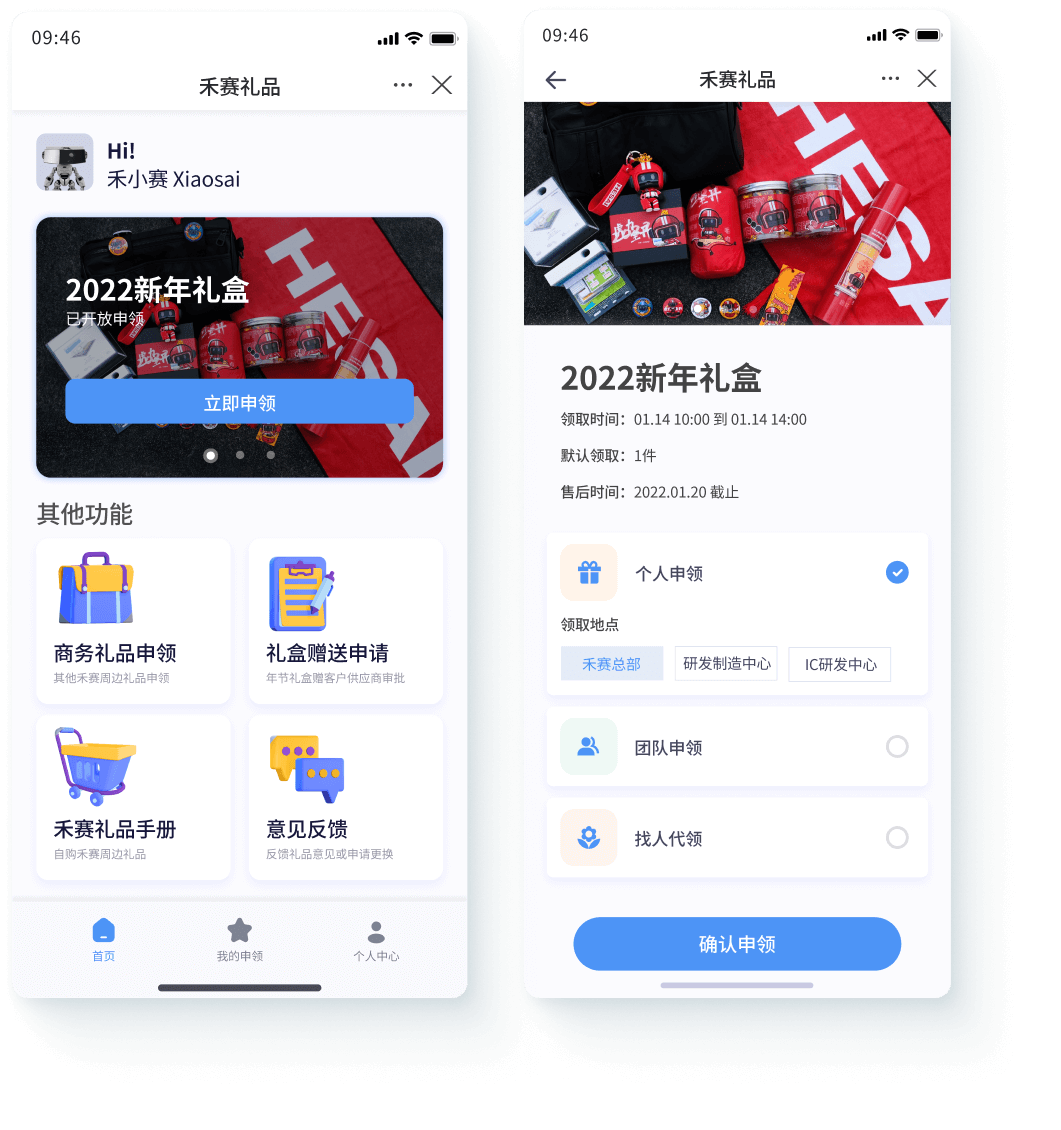
Login and Request the Gift
On the homepage, you can preview the gifts currently being distributed. After selecting to claim a gift, you can request gifts based on the type of request. During a single gift distribution process, employees can only choose specific methods of receiving gifts.
Scan the QR Code to Receive
On-site, you can view the details of the gifts being received. Each gift distribution corresponds to a QR code, under which you can see the type and quantity of the gifts being claimed. If the gift has already been claimed by someone else on behalf of the recipient, you won't be able to access the QR code for claiming it.


Gift Feedback
Employees can provide feedback on gifts they have received in the Feedback Center. They can also request replacements or make suggestions, which will be managed and addressed by the administrators in the background.
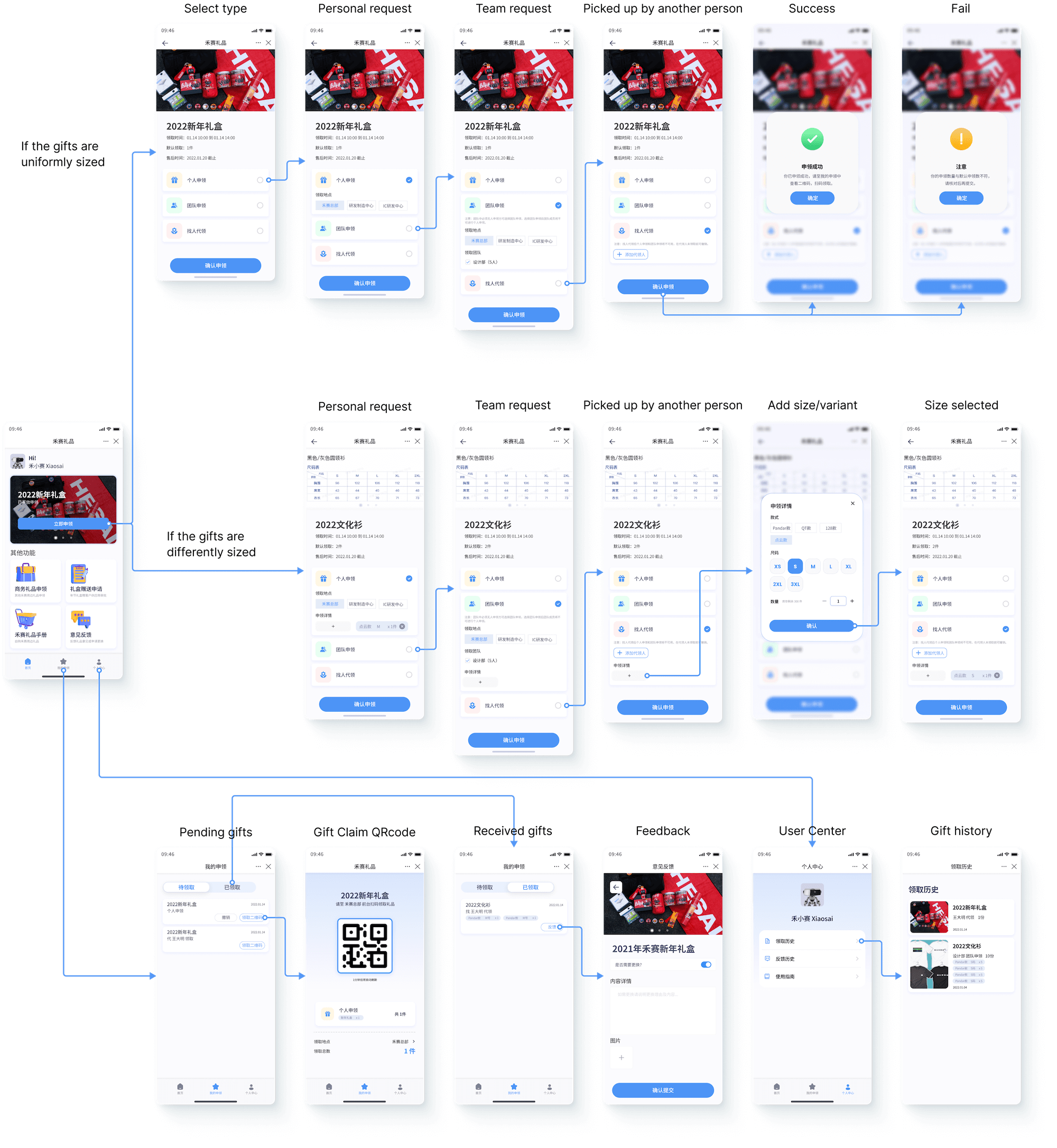
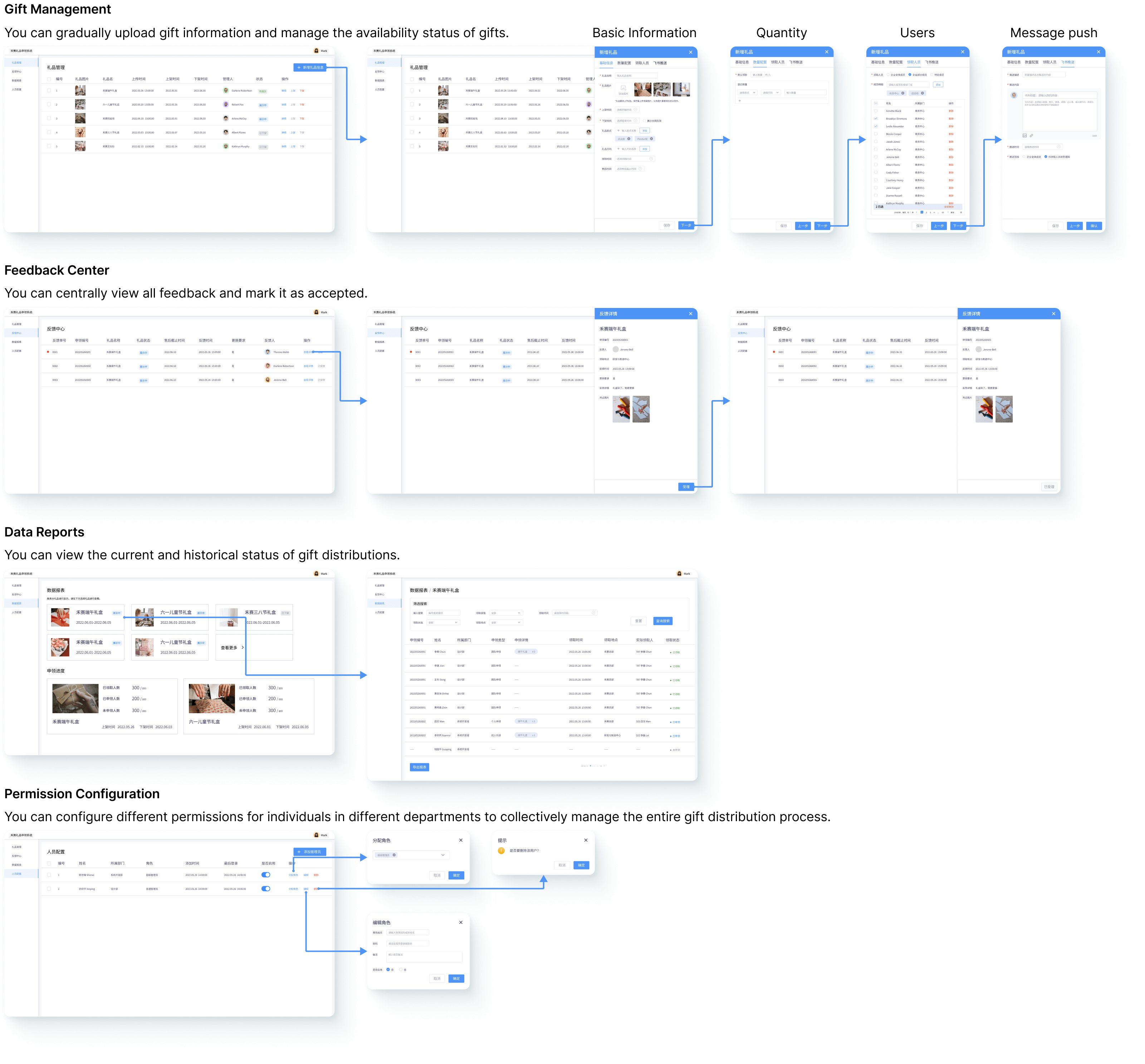
The gift system was launched on July 27, 2022, and after more than
a month of testing, it was put into use during the Mid-Autumn
Festival event on September 11, 2022.
On the day of use, the gift distribution process was
well-organized, with individuals scanning their QR codes one by
one.
Compared to the previous method of signing in on the paper form,
this approach improved efficiency, and gift distribution was
completed within one hour.
The Number of Users
User Coverage
Feedback Processed
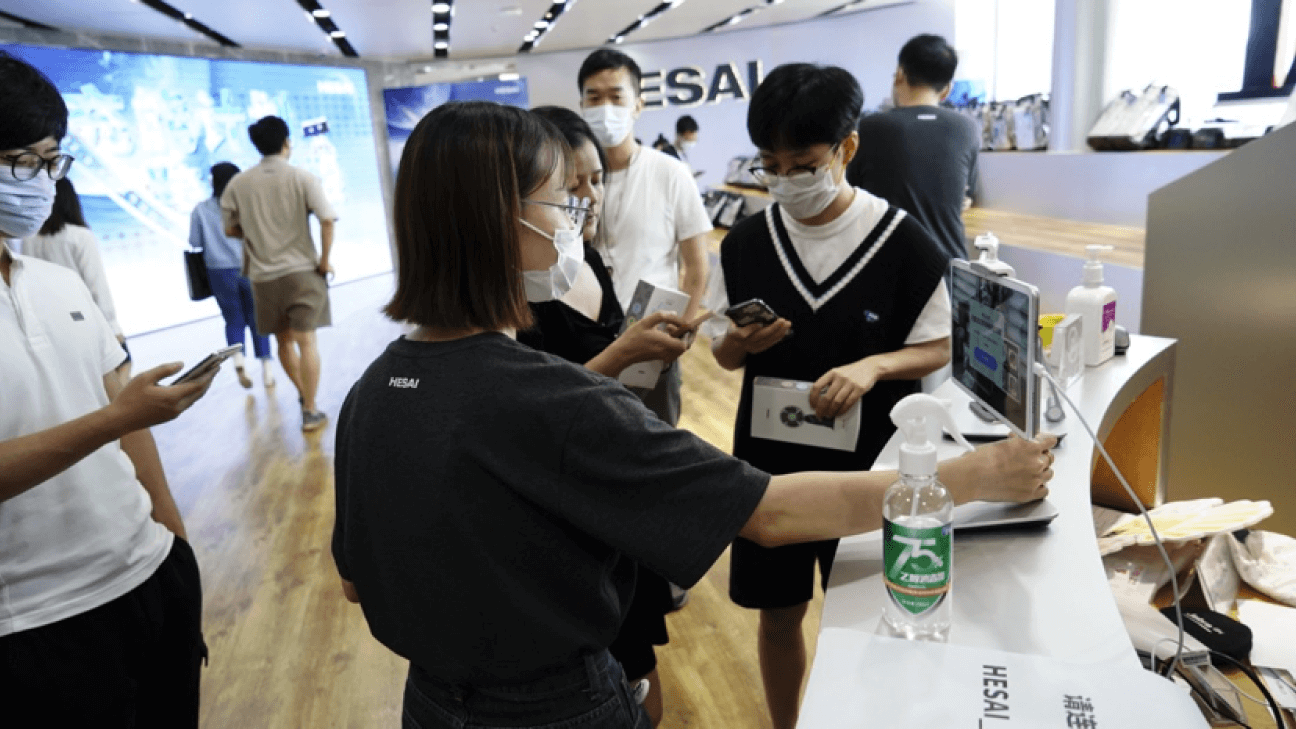
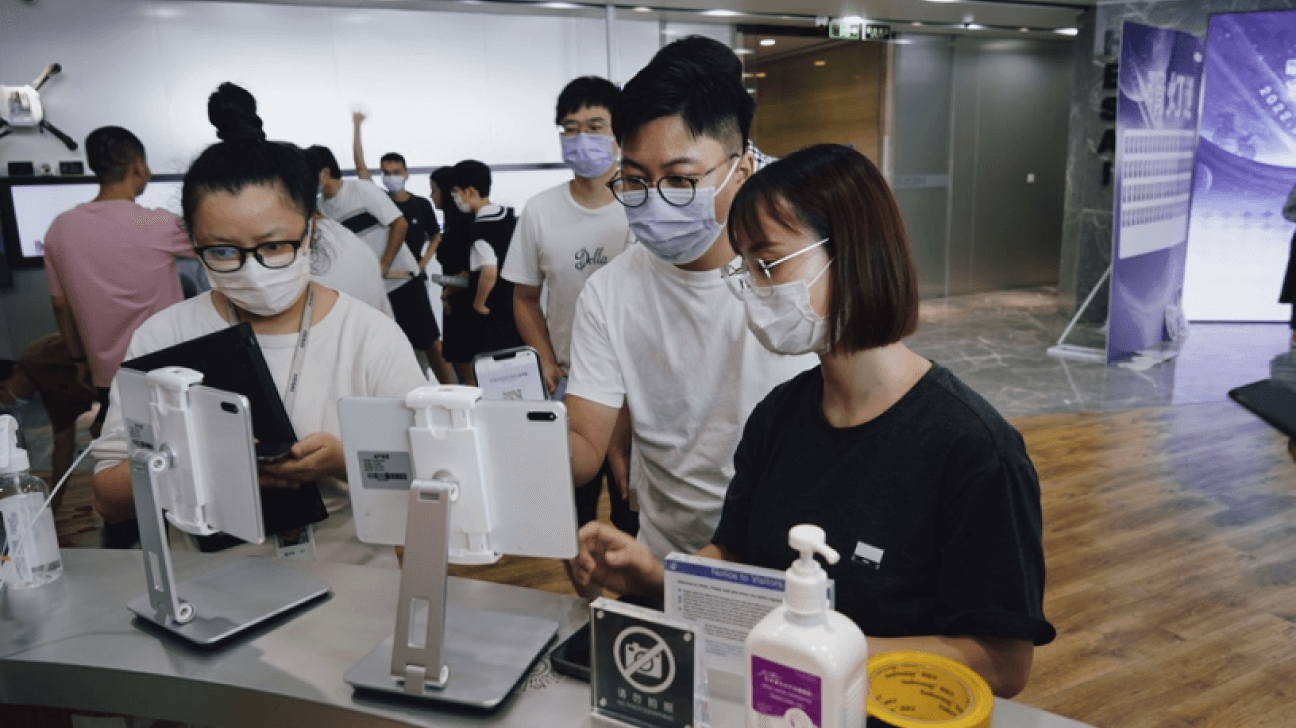
In the early stages of conceiving the product, I explored numerous complex scenarios and provided users with many choices, which resulted in unclear product logic and many overlapping situations. After discussions with my colleagues, we concluded that users wouldn't want to overthink these complexities when using the product. Their objectives were very clear. As a result, we decided to simplify things and impose constraints on user permissions and actions to make their interactions more focused. I believe this was a highly enlightening process for me.
Certainly, there were some situations that arose during product usage. For example, the need to investigate colleagues who took gifts without officially applying through the system added to the workload. Also, the inability to easily identify who hadn't received their gifts from the reports was a challenge. We've planned iterations to address these issues in the future.